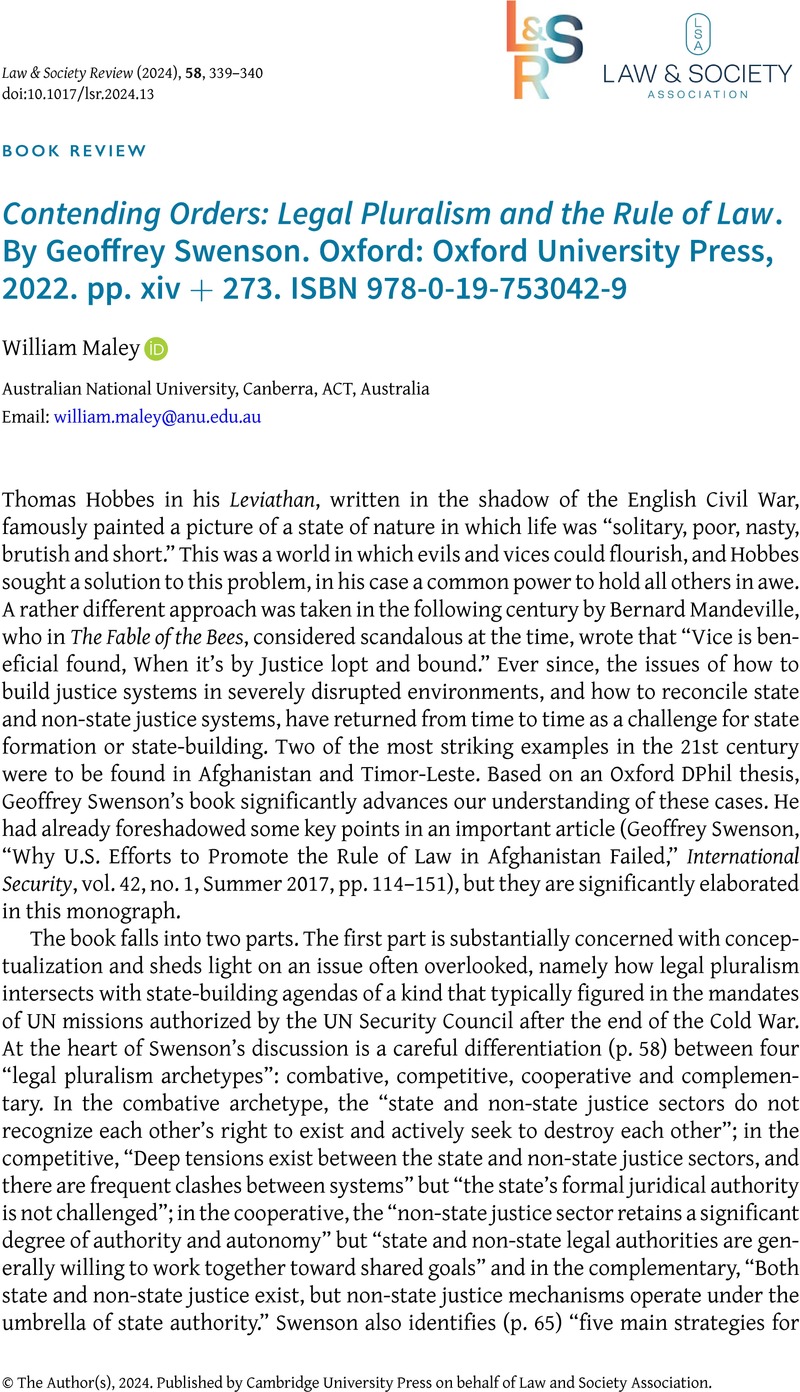No CrossRef data available.
Article contents
Contending Orders: Legal Pluralism and the Rule of Law. By Geoffrey Swenson. Oxford: Oxford University Press, 2022. pp. xiv + 273. ISBN 978-0-19-753042-9
Review products
Contending Orders: Legal Pluralism and the Rule of Law. By Geoffrey Swenson. Oxford: Oxford University Press, 2022. pp. xiv + 273. ISBN 978-0-19-753042-9
Published online by Cambridge University Press: 10 May 2024
Abstract
An abstract is not available for this content so a preview has been provided. Please use the Get access link above for information on how to access this content.

Information
- Type
- Book Review
- Information
- Copyright
- © The Author(s), 2024. Published by Cambridge University Press on behalf of Law and Society Association.


